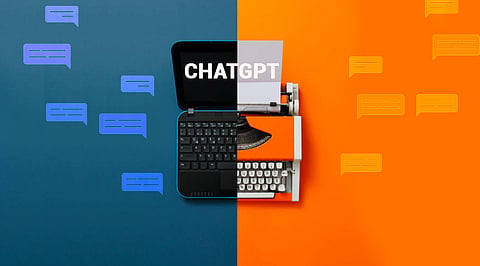

ChatGPT is the new buzzword in town that has taken over the internet. It has been dubbed a potential "replacement" for the world's largest search engine, "Google," in its first two weeks of operation. Is it a chatbot that can be used to complete daily tasks and seek answers, as we do with other millions of AI-based chatbot applications? In this article, we have explained everything about ChatGPT, including ChatGPT applications, ChatGPT functions and ChatGPT usage. Read this article on ChatGPT to learn more about it.
ChatGPT is an AI-powered chatbot system designed and developed by OpenAI. It was released in November to demonstrate and boast the vast capabilities of critical technologies such as artificial intelligence and machine learning, as well as what they can achieve in the future.
It is as beneficial as a "therapist," but it can also perform tasks such as "debugging" and "writing" a poem. But how useful is it in practice, and is it worth the hype? That is a question we must address. According to the report, Ujet, a company that sponsored a survey of 1700 US residents, 72% of them found chatbots to be 'time-killing.' At the same time, Chatbots are the priority of businesses in industries such as E-Commerce, where a machine can be taught certain frequently asked questions or queries regarding business inquiries, sales, and customer service.
The abbreviation for Generative Pre-trained Transformer is GPT. It is a quantifiable programming-based language model that employs word grouping. It can generate artificial intelligence-generated text that is distinct from what a human can produce in segments, sentences, articles, talks, short stories, and verses for a poem. OpenAI, a non-profit organisation founded in 2015, created the AI-based language programme. The programme has been programmed to take instructions as a prompt and respond with a detailed answer. It is as simple as using a chatbot to feed the query as a prompt, and the answer will be produced automatically without requiring the chatbot to understand the entire context. OpenAI's recent announcements of ChatGPT employ the third iteration of GPT, known as GPT-3.
GPT 3 are deep learning models that have been trained to produce text in response to the human-written text. The 'transformer architecture' was first proposed in the paper "Attention Is All You Need" and has since become a popular choice for natural language processing tasks. According to OpenAI, the model is trained using RLFH to fine-tune the tuning and conversational tone of the responses. RLFH is an abbreviation for reinforcement learning from human feedback, and it represents the model's computational abilities to learn from the sentiments of the human responses it receives. Its purpose is to train the model and help it learn from its mistakes in computational abilities.
GPT 3 are deep learning models that have been trained to produce text in response to the human-written text. The 'transformer architecture' was first proposed in the paper "Attention Is All You Need" and has since become a popular choice for natural language processing tasks. According to OpenAI, the model is trained using RLFH to fine-tune the tuning and conversational tone of the responses. RLFH is an abbreviation for reinforcement learning from human feedback, and it represents the model's computational abilities to learn from the sentiments of the human responses it receives. Its purpose is to train the model and help it learn from its mistakes in computational abilities.
One of the primary advantages of GPTs is that they can be fine-tuned for a variety of specific natural language processing (NLP) tasks, such as language translation, language generation, and text classification, by training them on large amounts of labelled data. This enables GPTs to achieve cutting-edge results on a wide range of NLP benchmarks, and they have been widely adopted by both researchers and industry practitioners. GPTs are effective because they are "pre-trained" on a large corpus of unstructured text data, such as books or articles, before being fine-tuned for a specific task. This pre-training teaches the model more about language structure and patterns, which can then be fine-tuned for a specific task.
Join our WhatsApp Channel to get the latest news, exclusives and videos on WhatsApp
_____________
Disclaimer: Analytics Insight does not provide financial advice or guidance. Also note that the cryptocurrencies mentioned/listed on the website could potentially be scams, i.e. designed to induce you to invest financial resources that may be lost forever and not be recoverable once investments are made. You are responsible for conducting your own research (DYOR) before making any investments. Read more here.
